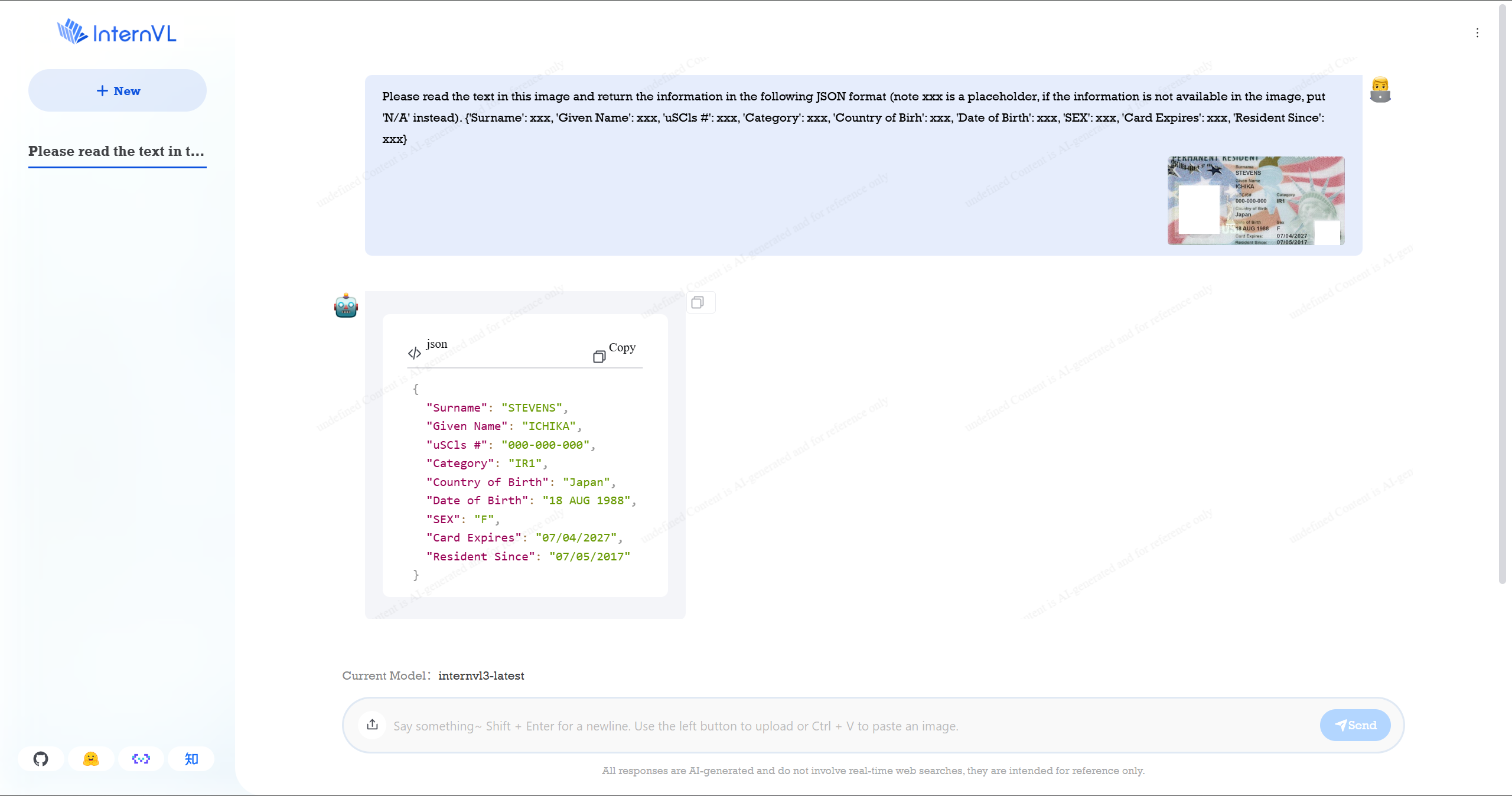Table of Contents
Overview
In the rapidly evolving world of AI, multimodal models are taking center stage. Enter InternVL3, a powerful family of open-source Multimodal Large Language Models (MLLMs) from OpenGVLab. Designed to tackle complex tasks involving vision, reasoning, and long-context understanding, InternVL3 offers a versatile platform for researchers and developers alike. With model sizes ranging from 1B to a staggering 78B parameters, it’s equipped to handle a wide range of applications, making it a noteworthy contender in the AI landscape. Let’s dive deeper into what makes InternVL3 tick.
Key Features
InternVL3 boasts a compelling set of features that set it apart from the competition. Here’s a breakdown:
- Native multimodal pre-training: This allows InternVL3 to learn directly from both visual and textual data, leading to a more integrated understanding of the world.
- Supports vision, reasoning, and long context tasks: InternVL3 is designed to handle a variety of tasks, from image recognition to complex reasoning problems that require understanding long sequences of information.
- Model sizes from 1B to 78B parameters: This scalability allows users to choose the right model size for their specific needs, balancing performance and computational resources.
- Excels in multimodal agent deployment: InternVL3 is particularly well-suited for building intelligent agents that can interact with the world through both vision and language.
- Open-source under OpenGVLab: This fosters community collaboration and allows for greater transparency and customization.
How It Works
InternVL3’s power stems from its native multimodal pre-training approach. By training on massive datasets of both images and text, the models learn to connect visual information with language in a seamless way. This integration allows InternVL3 to understand, reason, and respond across modalities with improved accuracy and efficiency. The architecture integrates image and text processing capabilities, enabling it to analyze visual inputs, understand their context, and generate relevant textual responses. This process allows the model to perform complex tasks that require both visual and textual understanding.
Use Cases
InternVL3’s versatility makes it applicable to a wide range of use cases:
- Multimodal AI research: Provides a powerful open-source platform for researchers to explore new frontiers in multimodal AI.
- Vision-language applications: Enables the development of applications that can understand and interact with the world through both vision and language, such as image captioning and visual question answering.
- Intelligent agents: Facilitates the creation of intelligent agents that can perceive their environment, reason about it, and take actions based on both visual and textual information.
- Educational tools: Can be used to create interactive educational tools that leverage visual and textual information to enhance learning.
- Visual Q&A systems: Allows users to ask questions about images and receive informative answers based on the model’s understanding of the visual content.
Pros & Cons
Like any powerful tool, InternVL3 has its strengths and weaknesses. Let’s take a look:
Advantages
- Highly versatile across modalities, making it suitable for a wide range of applications.
- Scalable model sizes allow users to choose the right model for their specific needs and resources.
- Open-source and community-supported, fostering collaboration and transparency.
Disadvantages
- Requires significant compute for larger models, which can be a barrier to entry for some users.
- Setup complexity for non-experts may require some technical expertise to get started.
How Does It Compare?
When considering multimodal models, it’s important to understand the competitive landscape. OpenFlamingo shares a similar focus on multimodal capabilities, but InternVL3 offers greater scale and a more active community. On the other hand, GPT-4V, while powerful, is a more proprietary solution with limited customization options compared to InternVL3’s open-source nature. This makes InternVL3 a compelling choice for those seeking flexibility and control.
Final Thoughts
InternVL3 represents a significant step forward in the development of open-source multimodal AI. Its versatility, scalability, and community support make it a valuable tool for researchers and developers looking to push the boundaries of what’s possible with AI. While the computational requirements of larger models and the initial setup complexity may present challenges for some, the potential benefits of InternVL3 are undeniable. As the field of multimodal AI continues to evolve, InternVL3 is well-positioned to play a leading role.
https://internvl.opengvlab.com/